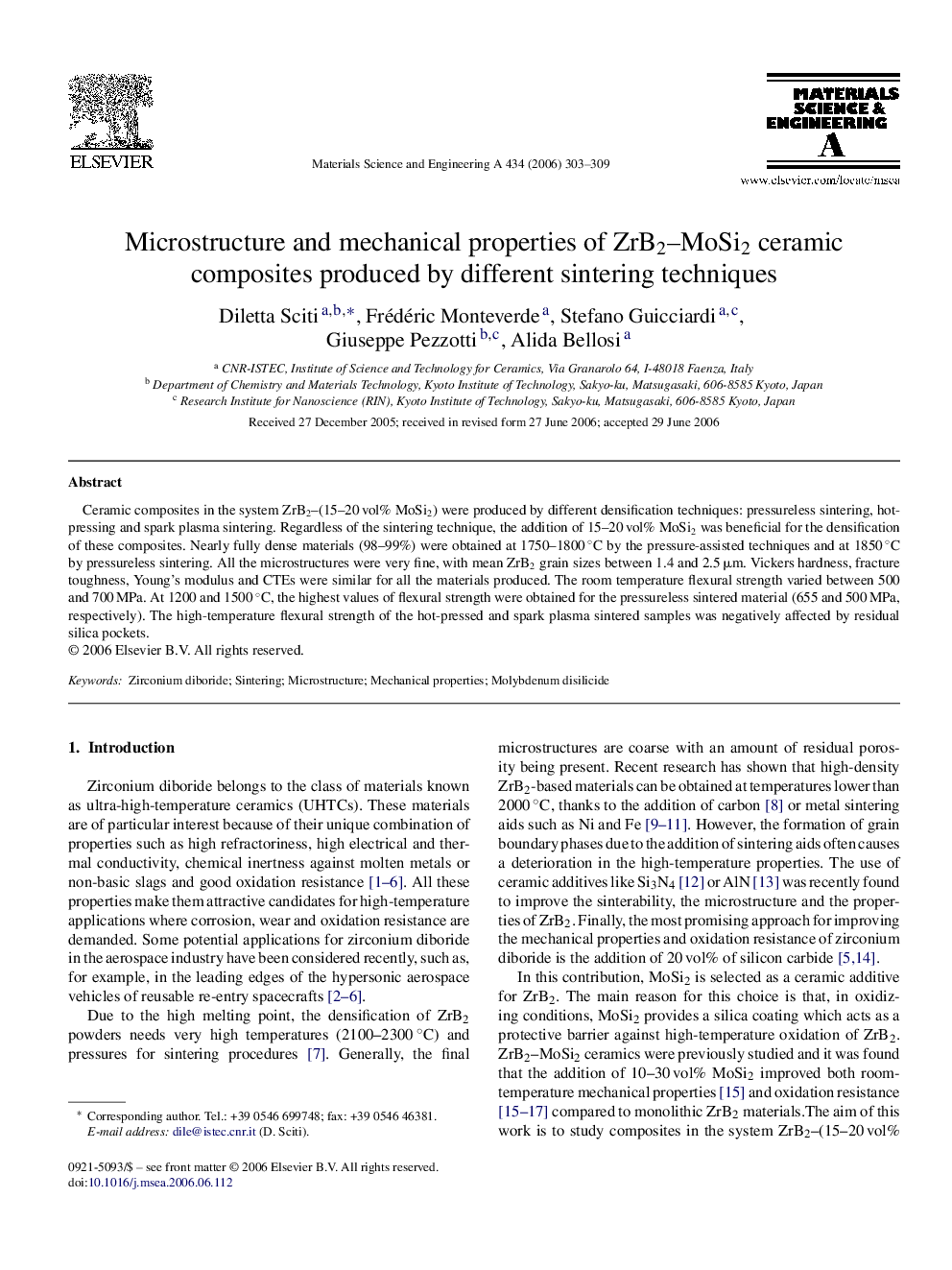| کد مقاله | کد نشریه | سال انتشار | مقاله انگلیسی | نسخه تمام متن |
|---|---|---|---|---|
| 1584924 | 1514910 | 2006 | 7 صفحه PDF | دانلود رایگان |

Ceramic composites in the system ZrB2–(15–20 vol% MoSi2) were produced by different densification techniques: pressureless sintering, hot-pressing and spark plasma sintering. Regardless of the sintering technique, the addition of 15–20 vol% MoSi2 was beneficial for the densification of these composites. Nearly fully dense materials (98–99%) were obtained at 1750–1800 °C by the pressure-assisted techniques and at 1850 °C by pressureless sintering. All the microstructures were very fine, with mean ZrB2 grain sizes between 1.4 and 2.5 μm. Vickers hardness, fracture toughness, Young's modulus and CTEs were similar for all the materials produced. The room temperature flexural strength varied between 500 and 700 MPa. At 1200 and 1500 °C, the highest values of flexural strength were obtained for the pressureless sintered material (655 and 500 MPa, respectively). The high-temperature flexural strength of the hot-pressed and spark plasma sintered samples was negatively affected by residual silica pockets.
Journal: Materials Science and Engineering: A - Volume 434, Issues 1–2, 25 October 2006, Pages 303–309